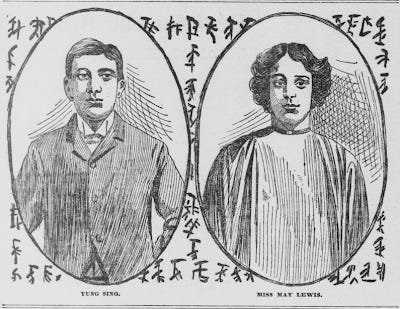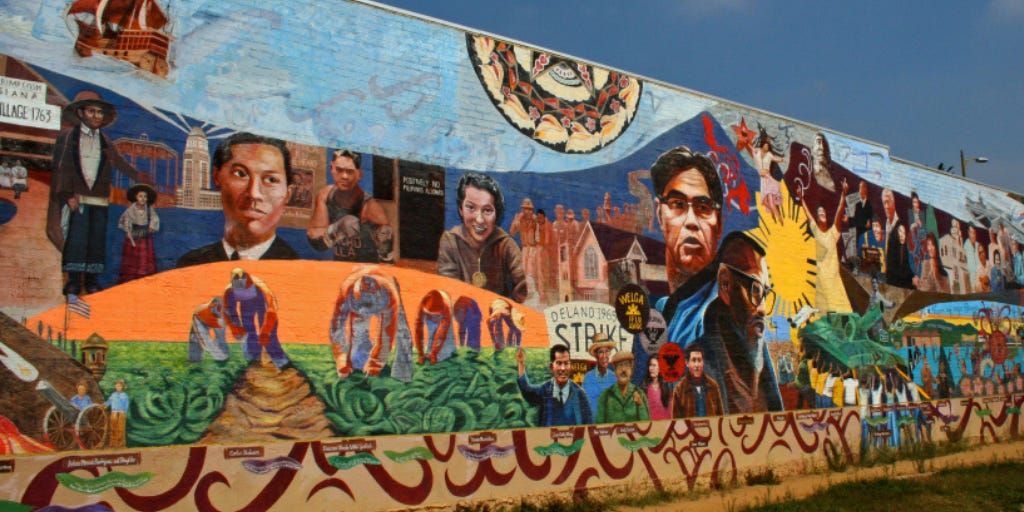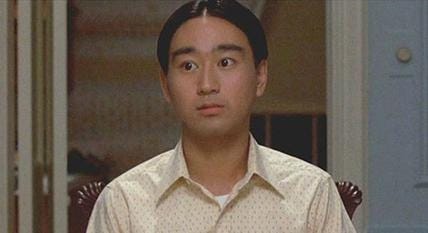Where Are the Wasians? Rethinking American History And Identity
Detailed Asian American stories have been hidden in the classroom long enough.

We have entered the yearly period when the American national consciousness is especially focused on the continued push towards liberation. Celebrations of Juneteenth have wrapped up, and many Americans are now looking forward to the Fourth of July. During times like these, I am reminded of what work needs to be done to continue the country’s emancipation, growth, and healing. Powerful words ushered by Frederick Douglass (1852) at an Independence Day oration still ring true. Douglass acknowledged “the mournful wail of millions...whose chains, heavy and grievous yesterday, are, to-day, rendered more intolerable by the jubilee shouts that reach them,” which conjure the feelings of a nation fissured between celebration and a fight for true equality.
As recognitions and festivities of Americanism commence over the days and weeks to come, I believe it is time we discuss the multitude of hidden historical Asian American identities, particularly the aptly titled “Wasian” (biracial white Asian) people that have lived throughout time. For a significant portion of my life, I, like many other non-white people, have had trouble envisioning a place for myself in America. My journey to the acceptance of my own identity was aided through historical writing and research, and it is my hope that centralizing these stories will help further other people's identity discoveries in some slight way.
Since the foundation of the country, the Fourth of July has been a holiday that revered white founders and faces. As I have begun my journey into adulthood, I often ponder the definitions of who or what a patriot actually is, who truly enjoys the liberties of the nation, and recently, what an “American” even looks like. For some context: my father came to America from Bangkok when he was 17 years old. He went to school here, and later met my mother—a red haired, Irish and Italian woman from the Boston suburbs. For my whole life, I have been caught between a white American world and a Thai peripheral world; my maternal, white family was here in America, while my paternal family was across the globe. Growing up, I had never truly felt American, but rather a person caught in a world of ambiguity in a time marred with divisiveness.
When people speak about representation in television, media, entertainment, business, and sport, conversations can take an almost theoretical tone. We can speak of representation very impersonally. Growing up some fifteen years ago, I had few Asian American idols, and even fewer Asian biracial role models in visible industries. I was exposed to very few Asian American sports stars, politicians, actors, musicians, and thinkers. As a child, I remember seeing only a handful of Asian public figures that looked like my family members—Jackie Chan, Yo-Yo Ma, Jeremy Lin, and Tiger Woods. The American film and entertainment industry historically propagated stereotypes of an exotic Asia in which women are prizes to be conquered by white men. Meanwhile, Asian men were portrayed in cinema as buffoonish, rude, and nerdy outsiders (think Long Duk Dong from Sixteen Candles). There were (and still are) very few stories of multicultural and multiethnic people in television and film.
Subsequently, I grew up believing that my mixed race family and my own personhood was a novelty within the story of America. When I was younger, I surmised that being American meant being white, Black, or Indigenous. Some of my favorite musicians, actors, thinkers, politicians, and athletes were Black and Brown Americans. Their work, music, writing, and outspokenness convinced me that patriotism is about adding progress, compassion, and nuance to our social landscape. In conjunction, I had a unique, liberal, public school social studies education. I learned about the myriad of different Indigenous peoples and the complexities of their societies. I was taught about impactful Black and Brown voices, like W.E.B. Du Bois, Percy Julian, and Maya Angelou, while simultaneously being indoctrinated with dated stories of white exceptionalism.
Similarly to media and film, my early education lacked significant representation of Asian American stories. The lessons focused more on separating the “Asian” from the “American.” We studied Japanese culture, but never Japanese Americans. Asian people were relegated to their world in their own continent. Even if they were Asian, they were almost entirely immigrant people—people that did not have a claim on the American identity. The classroom played a major role in why I saw people who looked like my brother and I as novelties in the American historical landscape.
Many young Asian and Pacific Islander Americans internalize an otherization. Asian American people are attacked and harassed on the street. We are abused and told we do not belong. I have been called names like “Jackie Chan” or “Jeremy Lin.” It is hard in certain moments when you question if you really have a place in America. Concomitantly, because of our lack of representation, we often cannot imagine a place for ourselves in this country other than the stereotypes we have been given.
Additionally, much of Asian American history is obfuscated. Asian American contributions have been masked by the homogenous blocks of power in America that look to maintain the status quo. It took me almost the entirety of my collegiate schooling to come to the discovery that there have been biracial Asian Americans across the Eastern seaboard since the late 18th century. Radical history textbooks and caring professors helped me uncover that Chinese men, like many other Asian peoples throughout North and South America, were recruited as laborers in the Northeast as early as 1785. They worked dangerous jobs in the whaling and fishing industries, and were often forced into segregated living spaces.
A common coupling in cities like New York, New Bedford, Philadelphia, and later San Francisco and Chicago would be marriages between the lower classed Chinese male immigrants and white Irish female immigrants. Even with anti-miscegenation laws in place, these couples had children, and these Asian American children would have lived in America twenty years after the country had gained independence. Families were often made in secret, and were often unapproved. These couples and their biracial children faced tremendous ostracization in the America they inhabited. The issues of exclusion and prejudice are still present today among mixed race couples.

It was not just on the east coast where multicultural Asian Americans have deep heritage. The city of Los Angeles was founded by Antonio Miranda Rodriguez, a Filipino man. In 1781, Rodriguez, a person of known Filipino ancestry, helped to found America’s second largest city and, today, the second largest home to Filipino people outside of Manila. Ultimately, Rodriguez lived throughout Southern California finally settling in Santa Barbara with his family.

These stories just scratch the surface of the long standing and multifaceted Asian American identity. My reevaluation of my identity was stirred by information I came across in college. Unfortunately, in-depth and expansive Asian American stories are not included in most American primary education. This lack of education led me to believe for much of my life that Asian descendants did not have a seat at the table, and that we were not deserving of the American identity. As I write this, states like Texas are continuing to whitewash American history. State governments want to remove requirements for teaching about the most influential BIPOC voices when discussing American history. Laws would restrict teachers from addressing social justice issues such as the Black Lives Matter movement, and critical race theory. State legislatures wish to make Asian American—along with Pacific Islander, Black, Brown, Queer, and Disabled—voices, both past and present, obsolete.
State governments like Texas plan to maintain fables of Western, white exceptionalism. By erasing the accomplishments and advancements of everyone that is not a straight white person, we will never understand just how valuable we were and still are in this nation. It took me years to finally understand just how American we are. For hundreds of years before myself, Asian Americans forged through the nation, labored in demanding industries, and had diverse and beautiful families. Like many other groups pushed to the margins, we have been manipulated by the political sphere, the entertainment industry, and our classrooms.
The two Americas that Douglass spoke of so many years ago still exist. People still celebrate this country with jubilant festivities. However, for many others, it is difficult to engage in such celebrations when they are still not fully liberated. We must remember that many Americans were not freed simultaneously. Throughout history celebrating the triumphs of the nation has been subjective. We have been told lies on what a patriot or American is supposed to look like, while people in power wish to maintain their control of these harmful narratives. Furthermore, beyond textbooks and college classes, my own self acceptance and understanding of my identity has come from the kindness and insights of others. My teachers and peers have guided me towards world-altering books and readings, spoken with me for hours, and become my good friends over time. History and education have immense power. The hiding of histories made me feel dismayed for many years, but now, I have unearthed the hidden space that many people like me have occupied since the founding of the nation.
If you liked what you read, be sure to subscribe above and follow us on Twitter and Instagram @invisibleasians to stay updated on Politically Invisible Asians!





Timely piece Nate! I sure hope classrooms start showcasing the histories of BIPOC in America more often, especially in primary education.